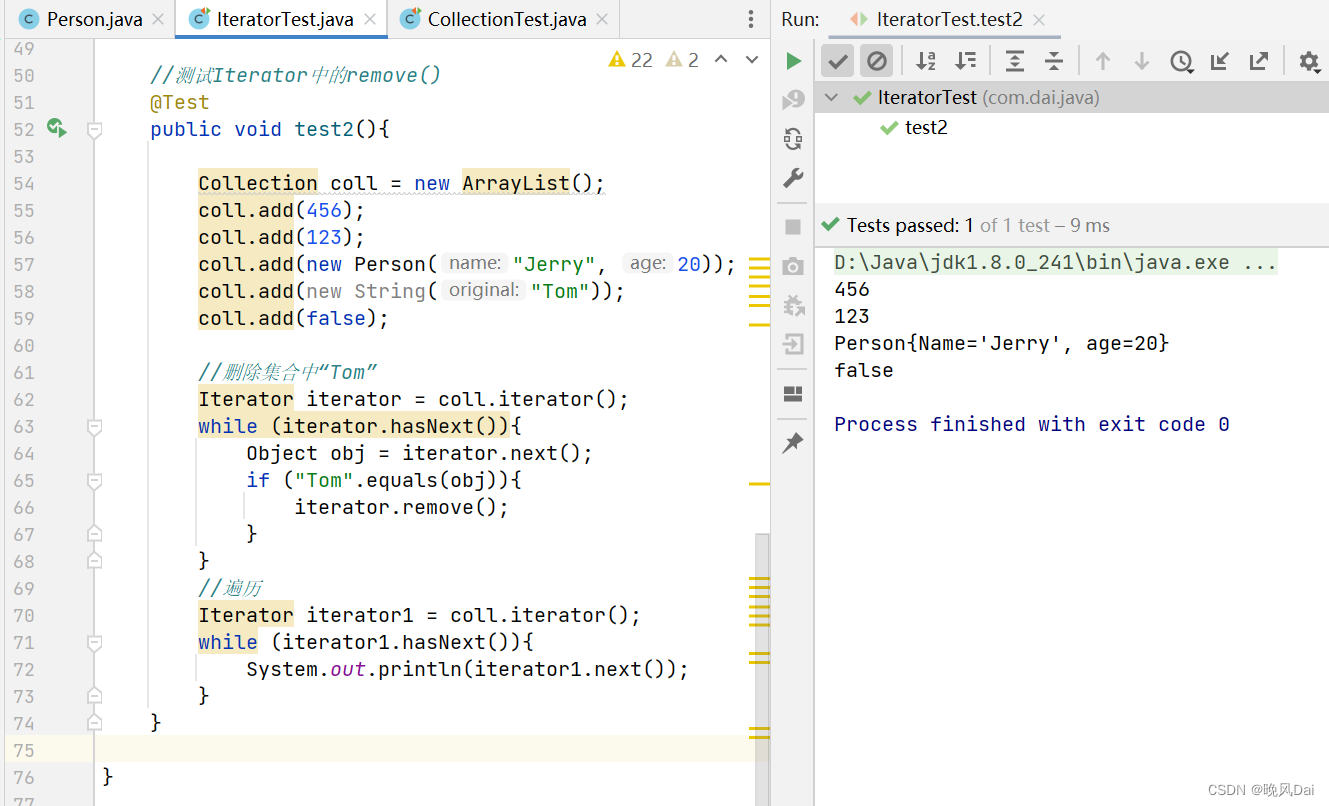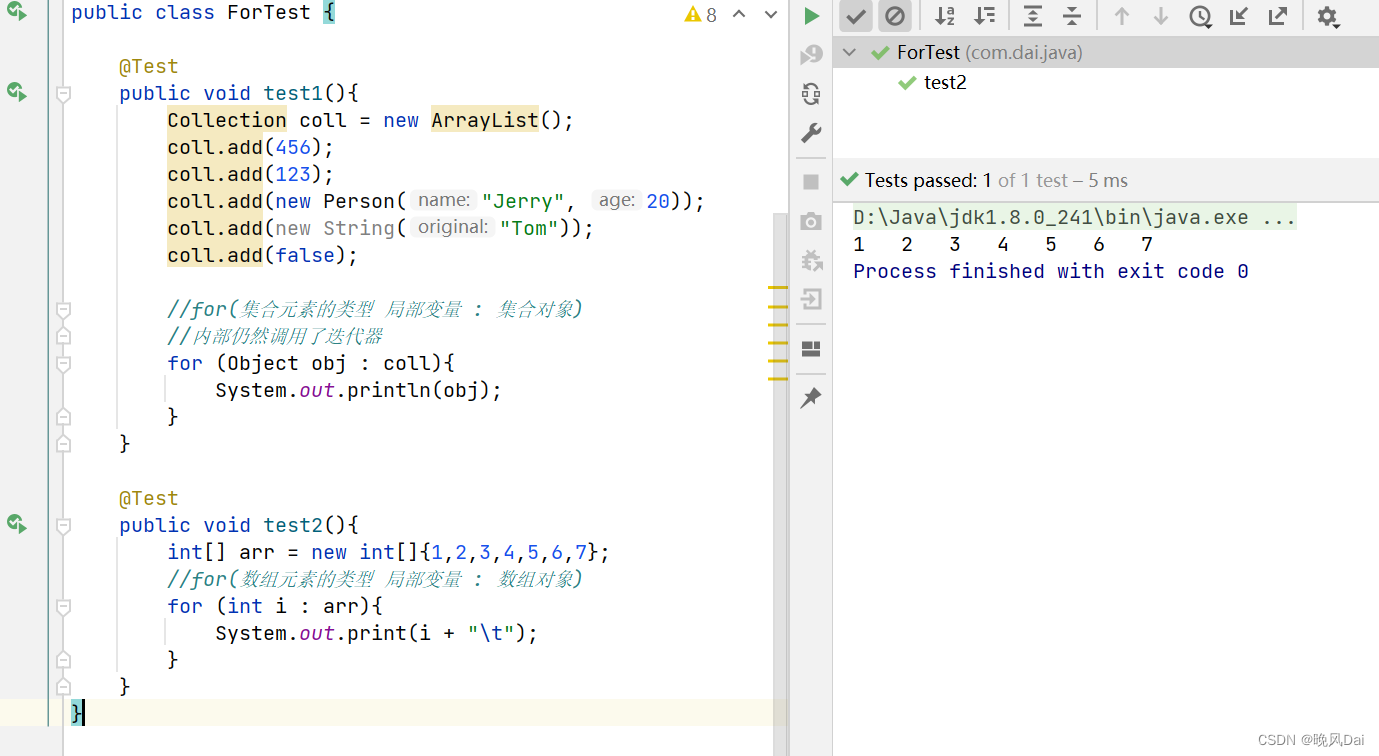Iterator接口remove()方法
注意:
1、 Iterator可以删除集合的元素,但是是遍历过程中通过迭代器对象的remove方 法,不是集合对象的remove方法。
2、如果还未调用next()或在上一次调用 next 方法之后已经调用了 remove 方法,再调用remove都会报IllegalStateException。
举例:
//测试Iterator中的remove()
@Test
public void test2(){
Collection coll = new ArrayList();
coll.add(456);
coll.add(123);
coll.add(new Person("Jerry", 20));
coll.add(new String("Tom"));
coll.add(false);
//删除集合中“Tom”
Iterator iterator = coll.iterator();
while (iterator.hasNext()){
Object obj = iterator.next();
if ("Tom".equals(obj)){
iterator.remove();
}
}
//遍历
Iterator iterator1 = coll.iterator();
while (iterator1.hasNext()){
System.out.println(iterator1.next());
}
}
运行结果如下:

使用 foreach 循环遍历集合元素
1、Java 5.0 提供了 foreach 循环迭代访问 Collection和数组。
2、遍历操作不需获取Collection或数组的长度,无需使用索引访问元素。
3、 遍历集合的底层调用Iterator完成操作。
4、 foreach还可以用来遍历数组。

举例:
@Test
public void test1(){
Collection coll = new ArrayList();
coll.add(456);
coll.add(123);
coll.add(new Person("Jerry", 20));
coll.add(new String("Tom"));
coll.add(false);
//for(集合元素的类型 局部变量 : 集合对象)
for (Object obj : coll){
System.out.println(obj);
}
}运行结果如下:

如上方法其实内部仍然调用了迭代器
我们再看一个例子:
@Test
public void test2(){
int[] arr = new int[]{1,2,3,4,5,6,7};
//for(数组元素的类型 局部变量 : 数组对象)
for (int i : arr){
System.out.print(i + "\t");
}
}运行结果如下:

感谢观看!!!